Cape Town is easily one of the most colourful cities I have ever visited, but certain areas stand out more than others. The Cape Malay Quarter – also known as Bo Kaap, is one such standout. This area is famous for its colourful houses, cobbled streets and distinctly Dutch vibe. Once full of Cape Malay people, this area is now popular with students and foreign expats.
On a sunny Sunday, I once again met up with Hannah and Marit to explore this beautiful area, and more of the Cape Town city centre.
It was a blisteringly hot day, and despite how oppressive the heat felt, it did mean that the throngs of other travellers were thinner than usual.
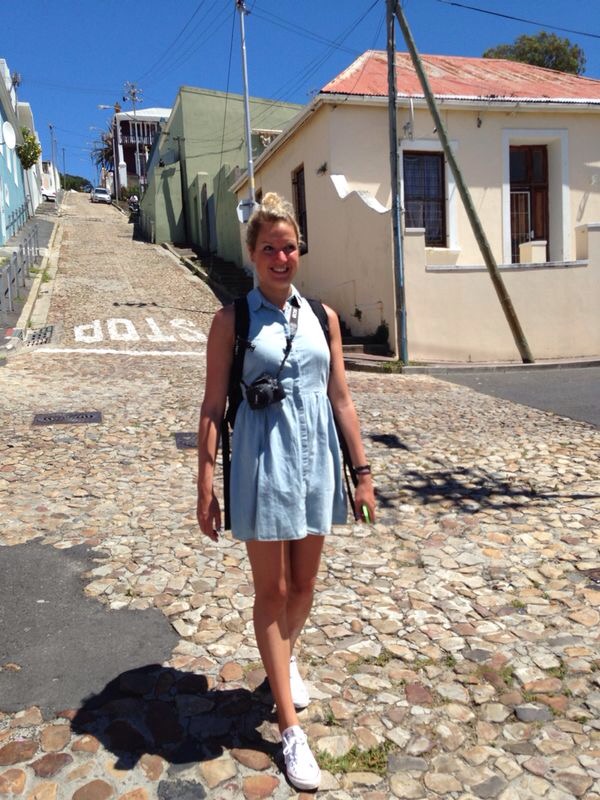
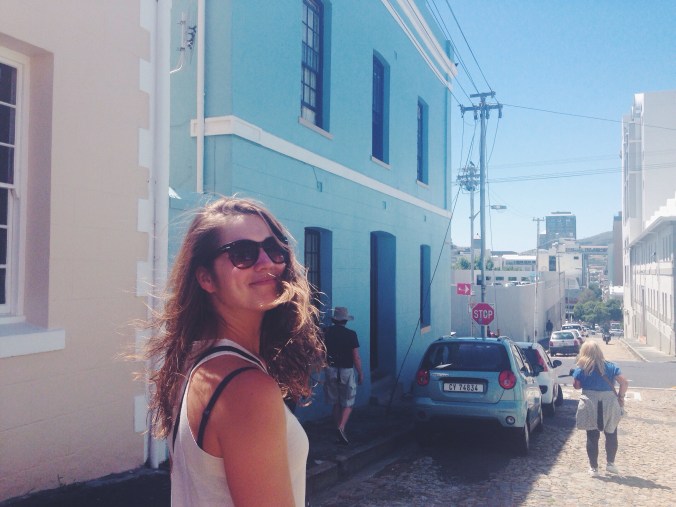
We spent about an hour walking and exploring before we then decided to join a small Cape Malay cooking class, where a wonderful long time resident of the area – Zainie – showed us how to make amazing Cape Malay curry and other delicacies. Zainie takes people into her own long-time home in Bo Kaap and while showing them how to cook the food of the Cape Malay people, explains how life was for this people during different eras and different points in South Africa’s history. It was a wonderful way to learn more about South African history, escape the heat and fill our bellies with yummy food all at once!
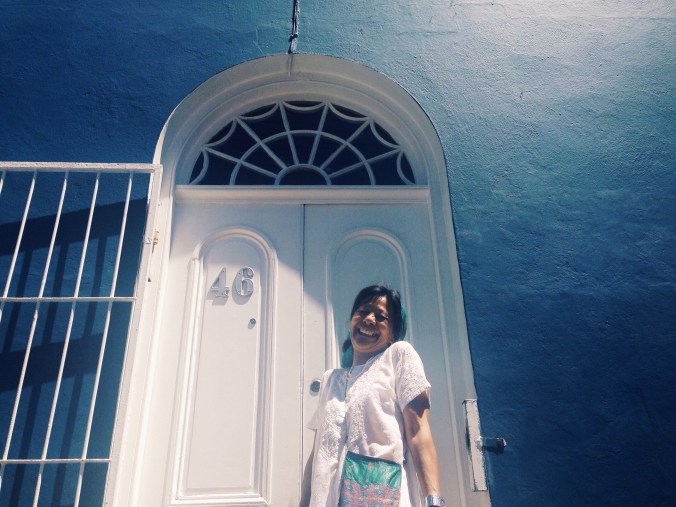
As it turned out, my lack of cooking skills back home follows me around the world, but Hannah – who is a proficient baker – took to the class like a duck to water. She was easily able to recreate all of Zainie’s demonstrations, and her samosas looked picture perfect.
After cooking for several hours, we sat down to a lovely meal where Zainie regaled us with stories about immigrating to Cape Town, and what life was like for the Bo Kaap people during and after Apartheid. It was both a delicious and informative afternoon.
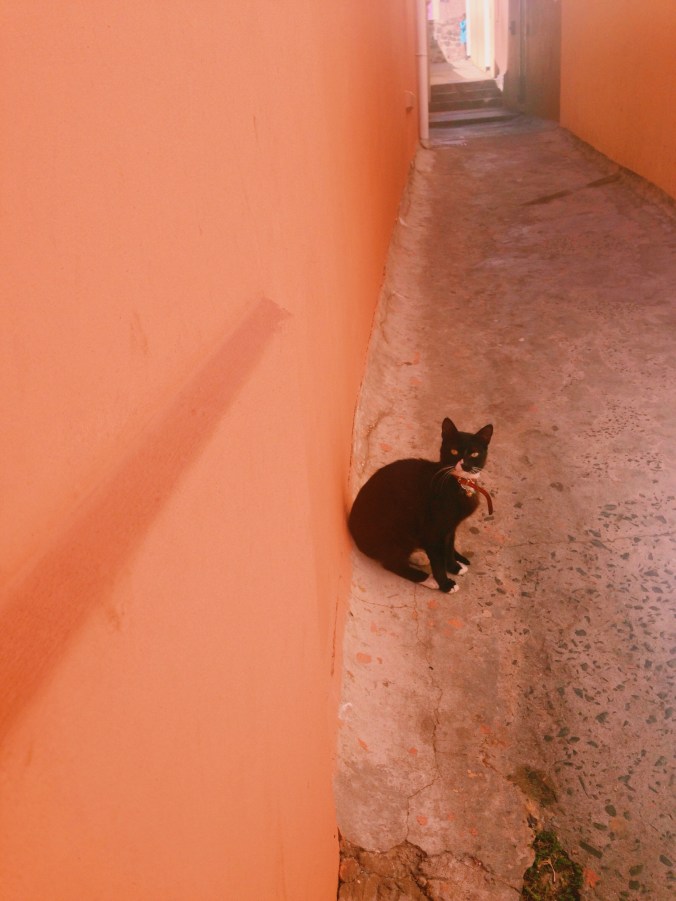
After we had filled our bellies (overfilled may be a more accurate term) we decided to walk around the District 6 area before Marit had to catch a train back to Muizenberg.
THE LOWDOWN
Hostel: Green Elephant Backpackers
Camera: iPhone 5
Budget: R150 ($15) per night for an eight bed dorm
Remember: Sunscreen and a healthy appetite
Bo-Kaap Cooking Class: A three hour class with sit down lunch and brief tour of the Bo-Kaap area is R600 ($60)
Get There: Catch any bus, minicab or train into the city centre and the Bo Kaap area is then a brief walk from Long Street
I love Bo Kaap and I really love Cape Town! I would love to hear what your favourite spots are in the Mother City, fill me in in the comments!


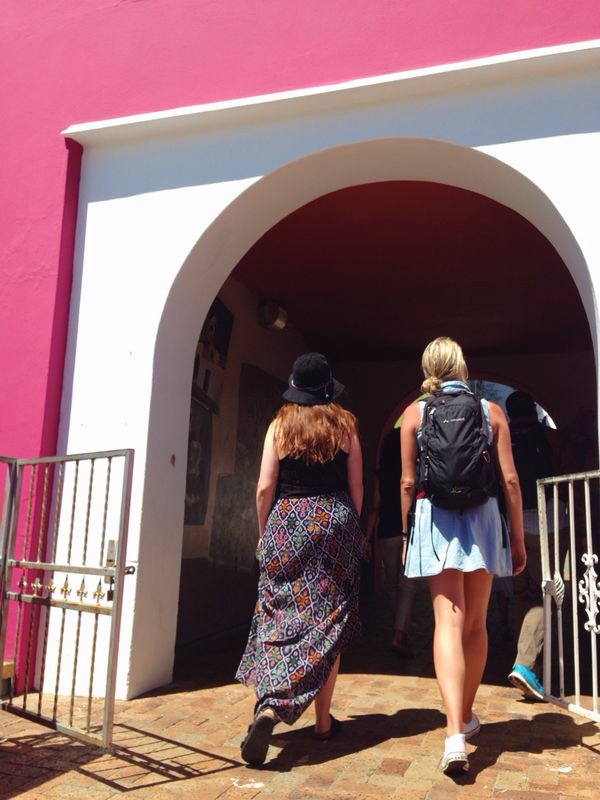

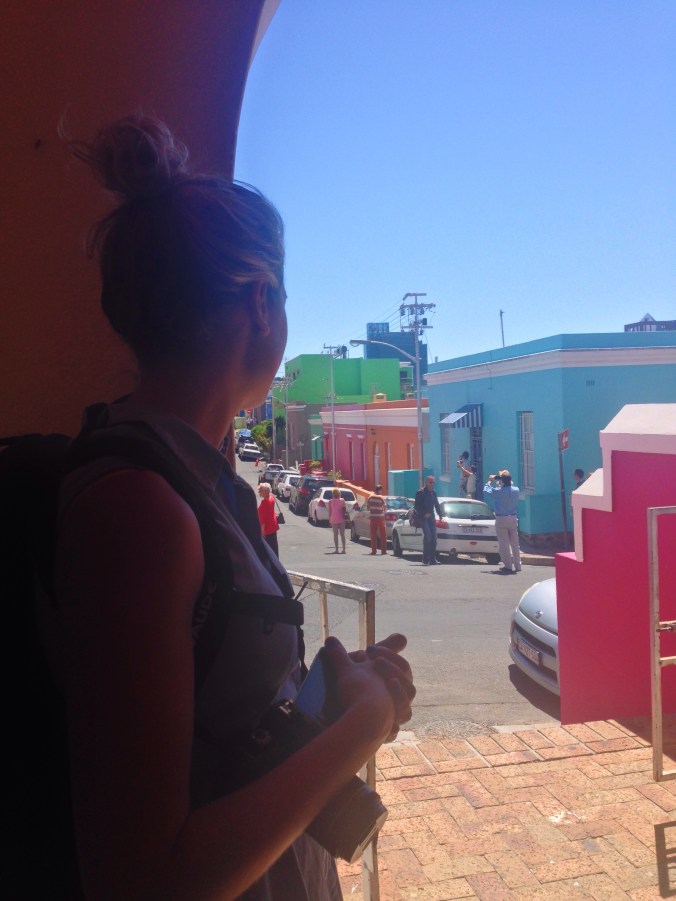
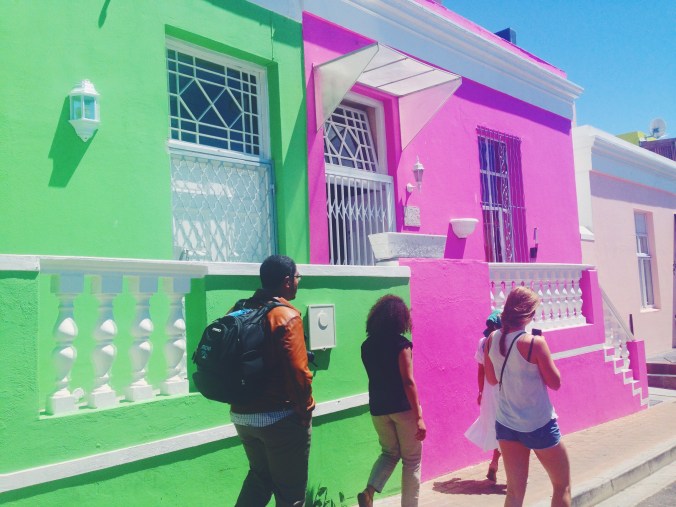
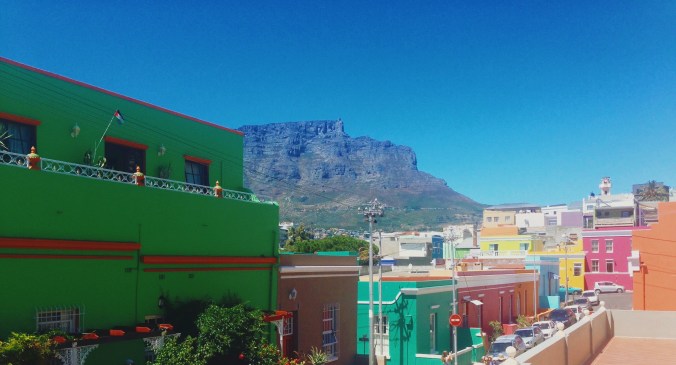
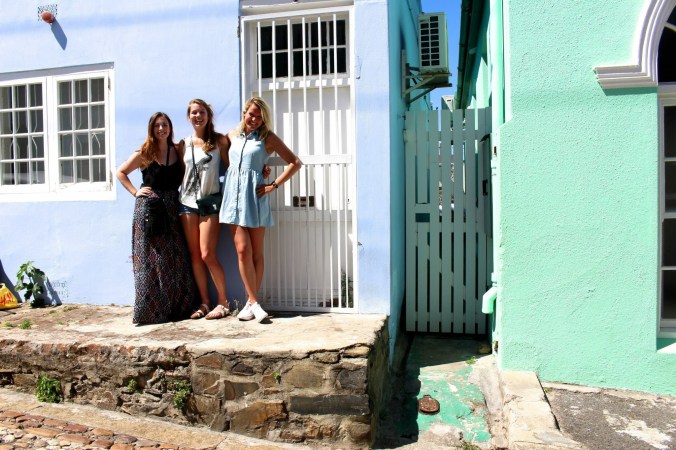
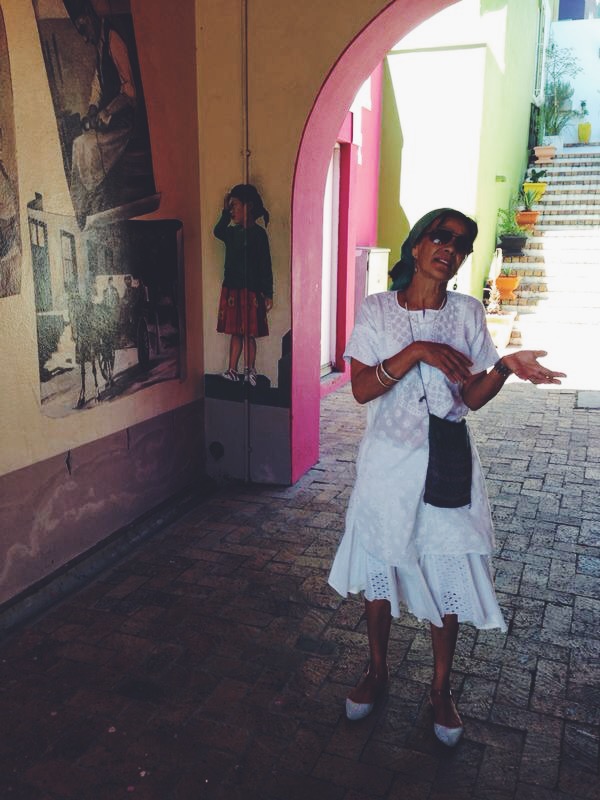
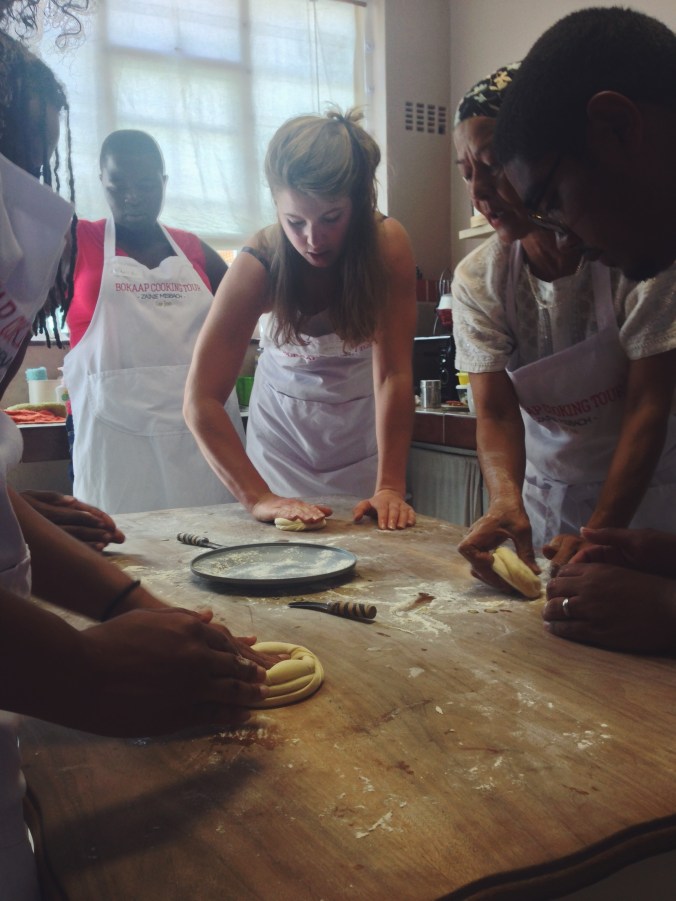
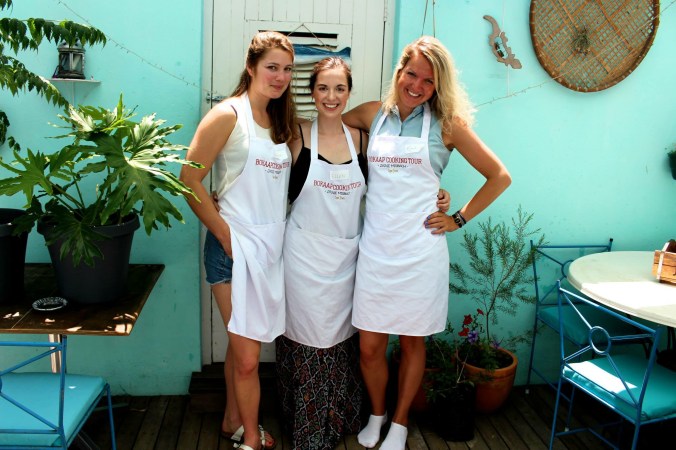
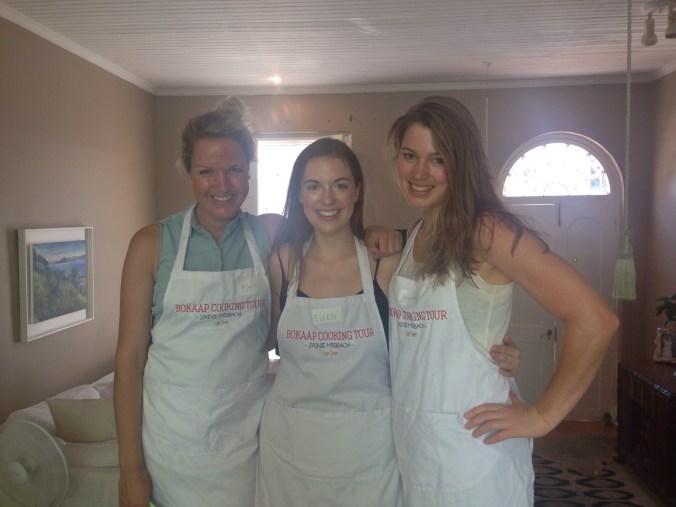
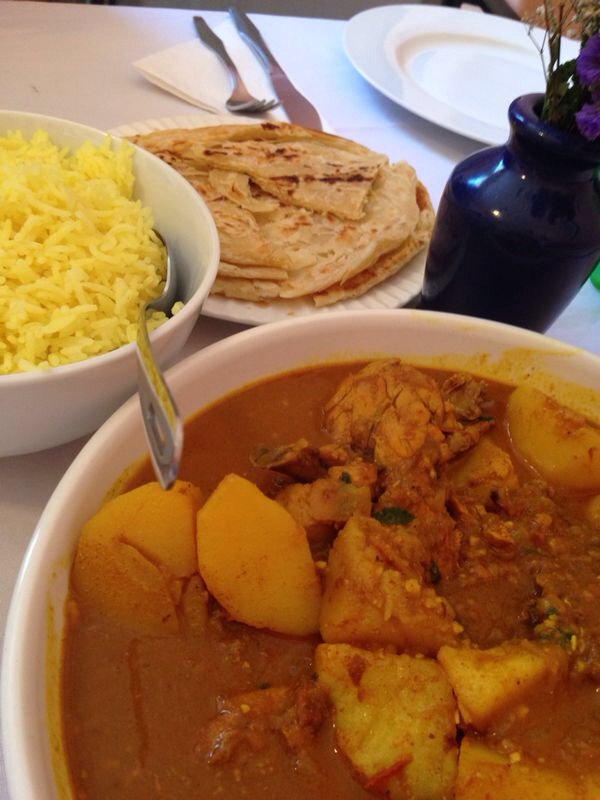

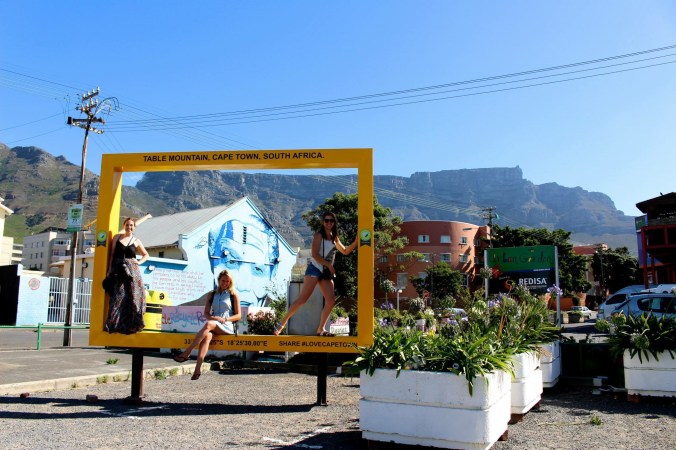

Looks amazing! And a cooking class sounds like a great place to learn some of the stories from the area, much friendlier and more interesting than the usual tour 🙂
Amazing shots…..
Hey – great writing – interesting place
Love that skirt, is it wrong I think I’d like to do my travelling in hot countries in a maxi? Oopsie.
Hahaha no I think that’s very reasonable
Haha oh good, that’s a relief! I just want to keep cool, that’s all…
I like your writing style 🙂 Great pictures too.
Loved your simple and informative style
So colorful!
wow… by looking at your pic, i feel so peaceful already. Must be a very nice place to unwind. BTW, the food looks like the food in Malaysia.
Indeed!
I think maybe because of the Malay connection.
I would have never known it to be such a charming place. I’m adding it to my list!
This is absolutely gorgeous 🙂
My favourite spot in Cape Town is the Table Mountain and the beach south of it! It’s so beautiful. And I also liked the Bo-Kaap.
Lovely post – Congratulations I have nominated you for The Very Inspiring Blogger Award http://averagesouthafrican.com/2015/05/12/blogger-awards-continued/
A really beautiful post. You’re so right about the colours and you three ladies looked to be having a fabulous time. I’d have loved to join that cooking class, too. Thank you for sharing those wonderful photos. 🙂
The colors of the houses in your photos reminds me of the ones on the hills throughout San Francisco. Thank you very much for sharing.
love that vibrant and contrasting colours. beutifully captured
Beautiful pictures! You travel to such exotic places!
Your pictures and vivid descriptions are inspiring!
Love all the colors against the bright blue sky and the cooking class sounds like a fun and fabulous learning experience! Anita
These photos are beautiful! It makes me want to travel <3
http://www.sillycrazylove.com
LOVE how colourful this place is! Fantastic blog ellen!!! safe travels 🙂
Delightful. I too visited Bo Kaap a couple of years ago and thoroughly enjoyed it and posted an account on HMWS Blog.
The pictures are stunning! This place is def. on my list to go-to! Amazing!
TheTravelPlaylist.Wordpress.Com
Judging from the photo of the curry and the paratha (or roti canai as we call it here in Malaysia), it seems that the Malay-ness of the Cape Malay people still exist. As a Malay from Malaysia myself, I couldn’t help but to wonder what it feels like for the earlier Malays to be staying in a totally different place i.e. Cape Town and to endure the apartheid era.
From my readings, I notice that the Cape Malays could not speak the Malay language anymore. So, maybe you can enlighten me of other cultural or heritage that these Cape Malays still practice.
Nice blog post anyway!
love those colors!
Your stories are interesting and many of your images are especially good.
You tell it well! I’ve walked some of those streets… before the paint arrived!! Must say, it looks a lot better now!! 😉
Everything about this series is just beautiful. The vibrant colors, great food, unique experiences, plus all the smiles are an unbeatable combination. I love how you are meeting with real people like Zainie who have a deep connection to their community and a very interesting story to tell. Great stuff!!
Thankyou so much! It’s so lovely to hear that people like my stories 😊
Absolutely gorgeous photos! Very high on my list of places to go
Thankyou! It’s an amazingly gorgeous corner of the city 😊
Awesome photos! Makes it to my list of places to go 🙂
Awesome! SA is an amazing country
The colors…beautiful.
Thank you 😊